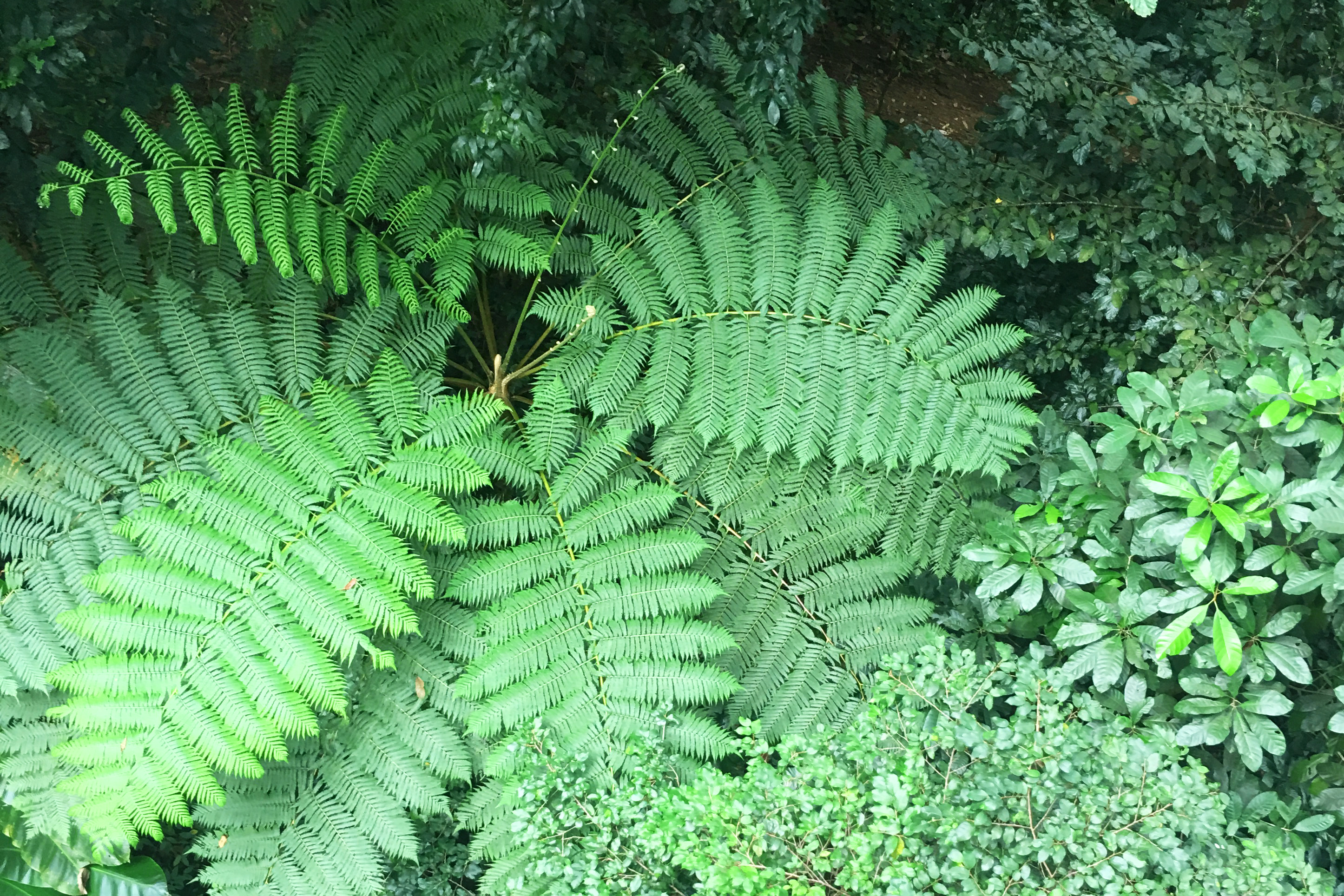There are many ways to experience a tropical rain forest: taking a hike, sliding down a zip-line, or via canoe, elephant, helicopter or jeep. Those are all great options. But in our view – if its possible, and especially if you’re short on time – the very best way is to take flight on an aerial tram that will take you gliding through and ultimately above the foliage. All of your senses will be engaged, and while you won’t emerge on an adrenaline high (at least, as long as the equipment is operating properly), there’s the very real possibility that you might return from the forest having had a spiritual epiphany. We recently visited the Caribbean island of St. Lucia for the first time, and we decided to give the island’s Aerial Tram a go. The adventure takes only about an hour from start to finish, and it’s a truly ethereal experience.
The Windward island of St. Lucia has a mountainous volcanic interior, and much of the island is covered in natural rain forest. On a longer visit, we would have set out to experience the tropical forest in a number of ways. But we were only there for one afternoon. So we signed up for an Aerial Tram tour from Rainforest Adventures. They’re located about 30 minutes away, by car or bus, from the cruise ship harbor.
We’re greeted by our ebullient guide Kennedy, whose jovial nature belies his deep knowledge of the forest and its flora and fauna. Throughout our trip, he regales us with stories of the history of the island and the nature of forest through which we are gliding. Underneath his banter is a great deal of serious and helpful information about the ecological importance of the rain forest and the ongoing effort to preserve it.
After a quick safety overview at the base camp, we board our tram car. It’s an 8-passenger green gondola with wooden seats and an iron rail halfway up the sides, fully open all around but covered on top in rain-proof plastic.
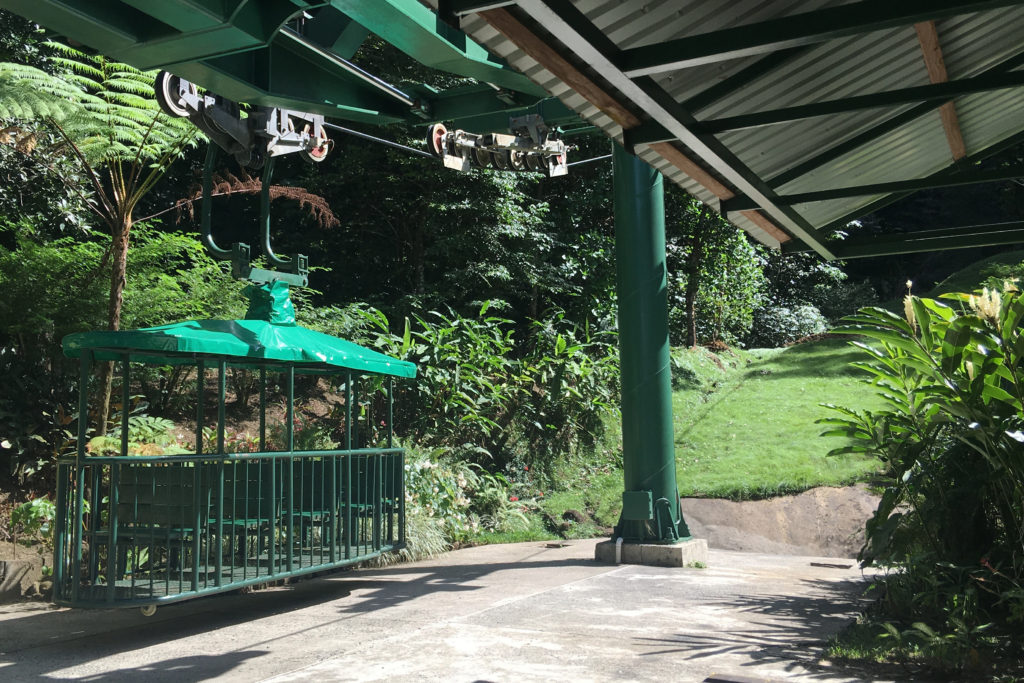
© Dandelion Chandelier
Right from the start, it’s a truly dreamy experience. The base of the tram is located at the 2nd lowest of the 4 layers of the rain forest (the layers – from bottom to top – are forest floor; understory; upper canopy; and emergent). As we rise gently upward through the dimly-lit understory, the only sounds we hear are the guide’s voice (which is mercifully not amplified, so it remains at human volume); birdsong; the wind in the trees; the gurgling of a small waterfall (and the occasional hoots of a distant zip-liner). The tram itself is virtually silent, which makes it fee like a magic carpet ride. It’s deeply restorative to be in such a verdant place with no distractions — just a cool breeze and 50 shades of green. The journey made us reflect on what it must be like to be a bird — to soar within and above the lush foliage and ride the crest of a fresh breeze off the ocean.
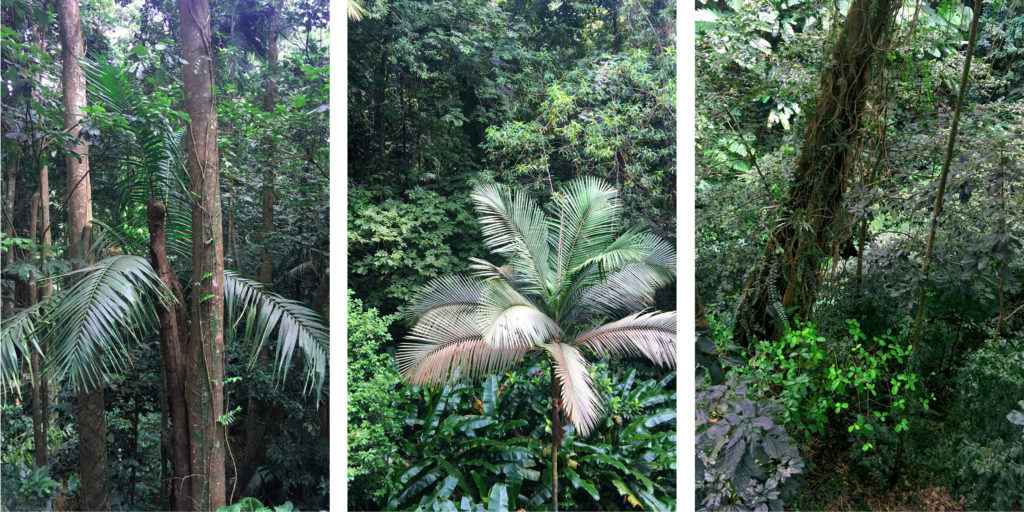
© Dandelion Chandelier
As we ascend, we get a primer about the commonly-accepted definition of a tropical rain forest: there must be some kind of flowering plant at all times; it must be located in the zone between the Tropic of Cancer and the Tropic of Capricorn; it must receive more than 68 inches of rain a year; and the temperature must never fall below freezing. Another distinctive element of a rain forest is that the thick treetop canopy blocks most of the sunlight from reaching the forest floor, resulting in very little vegetation at that level (unlike a tropical jungle, where the floor is very lush).
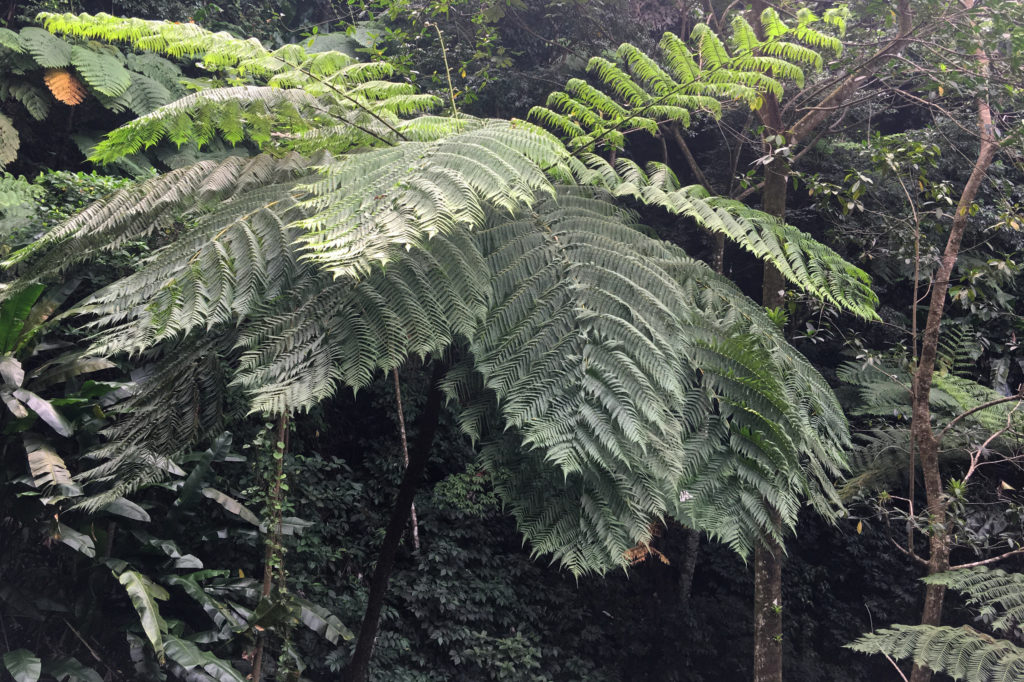
© Dandelion Chandelier
We learn that on St. Lucia, the trees in the rain forest are mostly teak and mahogany. There are also towering gommier trees (which exude a gum resembling incense) and chatannier trees, many of them entwined with vines. There are giant ferns, and delicate strangler figs, and at the right time of year, dazzling heliconia flowers (they closely resemble birds of paradise). We glide past buttress root systems and giant ficus trees. Far below, a river gushes through a ravine. The views are absolutely breath-taking.
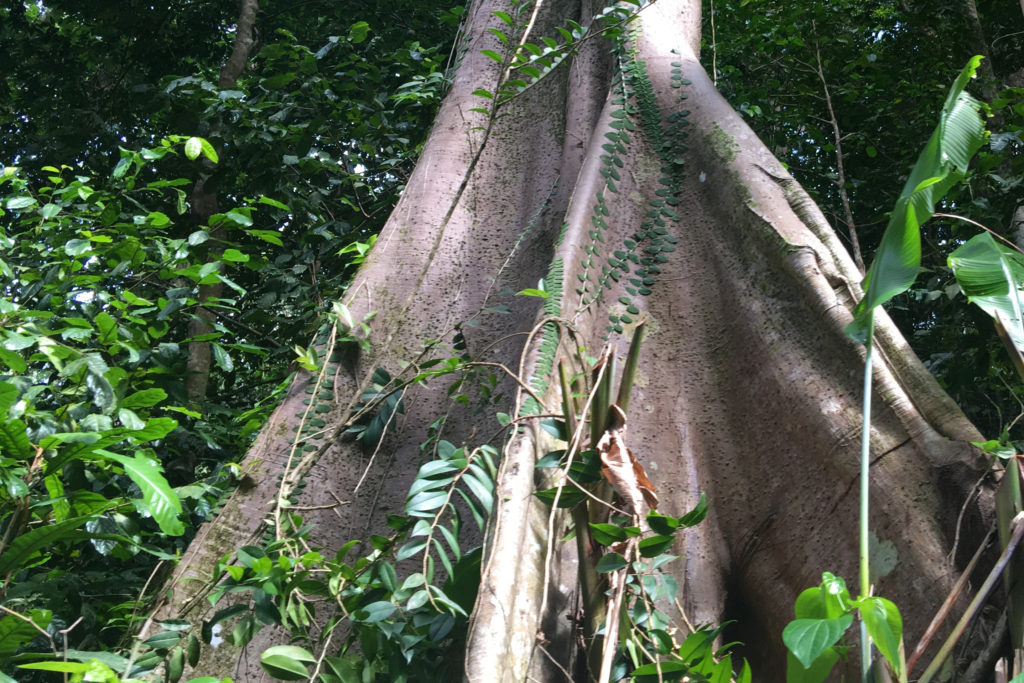
© Dandelion Chandelier
We spot a handful of hummingbirds and bananaquits (seeing lots of birds would require being in the forest at 6:00a, when they’re most active); sadly, we don’t lay eyes on one of the island’s famous St. Lucia Parrots. Our guide Kennedy teaches us how to tell the male hummingbirds from females (the males have more colorful feathers, and “they fight all the time”); he shares the bird’s dietary habits (they subsist on nectar and insects).
A few butterflies flit past.
We learn that ferns have no gender and that they are the oldest plants to known to man (along with the fiddle heads that grow in their centers). We learn about how some plants form symbiotic relationships, while other are predators, who slowly devour their host trees (consider that a life lesson, kids — some people are predators, and some are partners). We’re told about why the vines curl around the trees in a counter-clockwise spiral, the opposite of what they’d do if they were below the Equator.
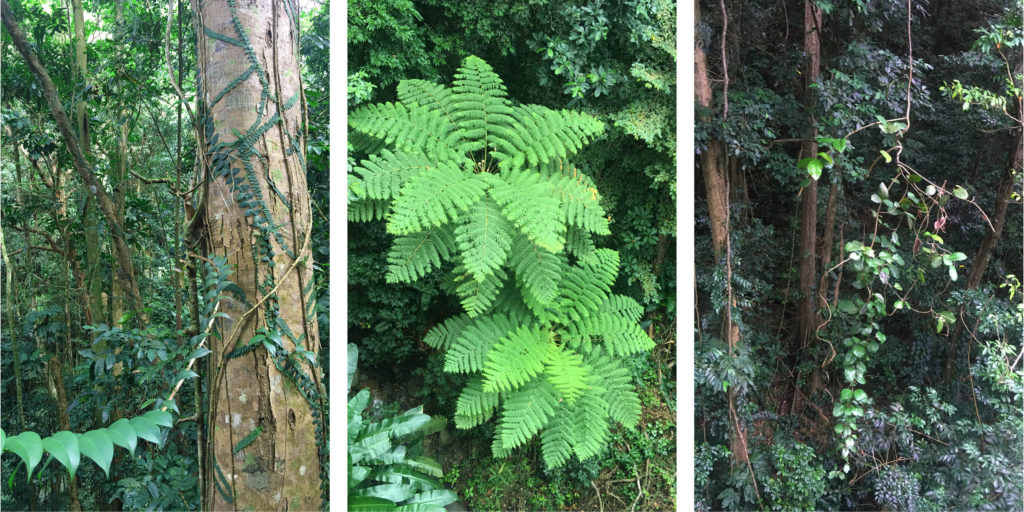
© Dandelion Chandelier
We learn all kinds of fun facts that we never knew. For example, St. Lucia boasts two Nobel Laureates among its native sons: the poet Sir Derek Walcott and the economist Sir Arthur Lewis. Incredibly, both were born on the same day, although several years apart — so January 23rd is Nobel Day on the island, and from roughly mid-January through early February, there’s an annual Nobel Laureate Festival with guest lectures, book fairs, music, dance and art shows. Can we just say that we totally love that idea? We want to go next year.
All too soon, we reach the canopy and the very top layer. As we begin to descend, we’re treated to panoramic views of the Atlantic and the Caribbean, as well as neighboring Monserrat (or was it St. Marten?). Right on schedule, around 4:00P, the skies open and it begins to rain (even though we visited during the dry season). But by that time, we’ve descended from the clouds. We kind of wish we could have done the tour in the rain — it would probably have been even more magical.
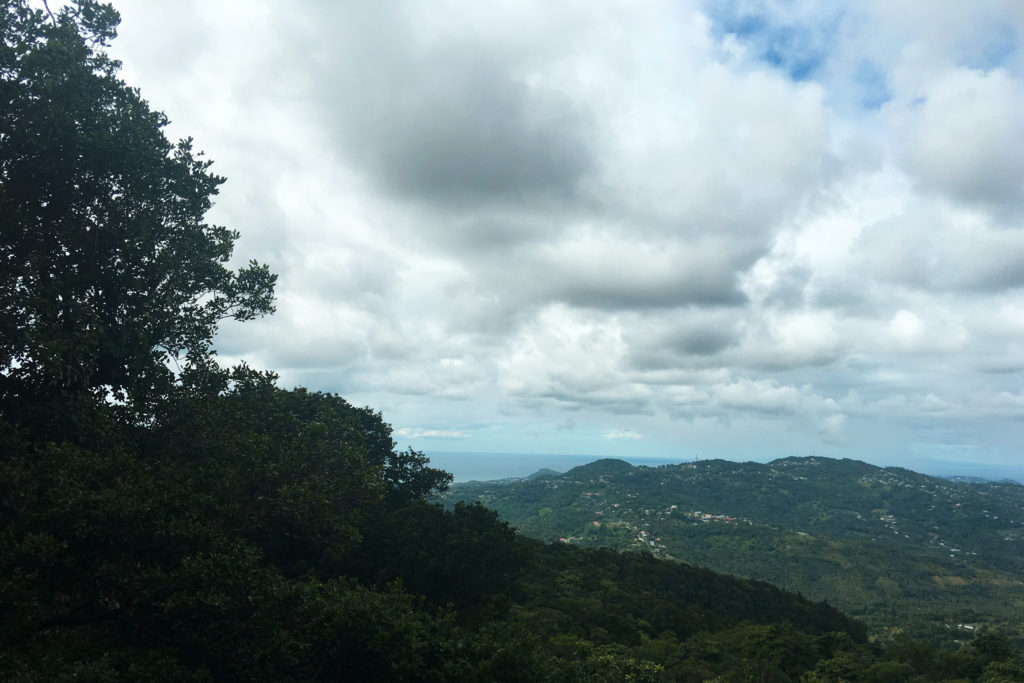
© Dandelion Chandelier
Back at the base camp, there’s a small garden filled with tropical flowers that was dedicated by the government of St. Lucia and England’s Prince Harry in 2016 as part of a joint effort to preserve and protect the rain forest. It’s filled with vibrant pink and red flowers (we like to imagine the adorable Prince Harry here). As we end our tour, we’re treated to icy fresh glasses of mango and passion fruit juice (if you take this tour, definitely go for the passion fruit — it’s incredible).
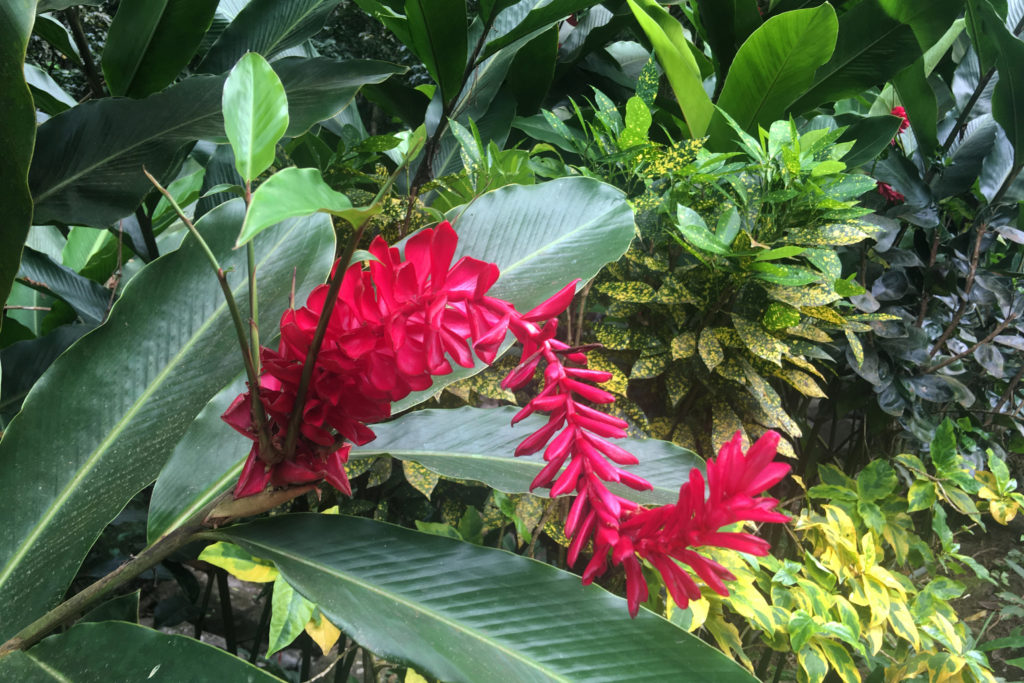
© Dandelion Chandelier
The aerial tram tour costs $80 per person; you can also choose to combine it with a zip-line tour.
There are lots of stimulating and exciting things to do in St. Lucia: zip-lining, snorkeling, shopping. If in the midst of all of that, you seek a more spiritually engaging experience that will make you feel closer to nature and nearer to both the earth and sky, this is the experience for you. An added benefit? It’s the perfect multi-generational experience – grandparents and grand kids will both love it (and be able to do it safely). And who knows what you’ll find, up in the air together? Just keep your eyes peeled for that Parrot.
Join our community
For access to insider ideas and information on the world of luxury, sign up for our Dandelion Chandelier newsletter. And see luxury in a new light.

